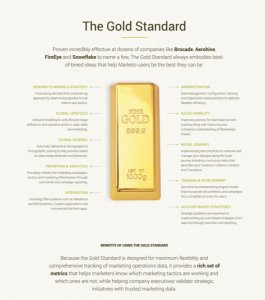A couple of years ago Digital Pi’s Tom Grubb helped build an Amor house for a family in Tijuana. It was the fourth Amor house in ten years built on the Amor blueprint designed so that any small group of people can build a sturdy, two-room stucco home on a concrete foundation in only four days – without power tools. The Amor house design is incredibly successful because it follows a standard that is well documented, scalable and repeatable across decades, varying skill levels, and extreme building conditions. What can Marketo users learn from Amor’s success? Embrace the three s’s: standardize, simplify, and synchronize.
Before we explain the three s’s, it helps to understand that Marketo is an application development platform for marketers. That means Marketo offers the raw materials to configure and build your own Marketo “house” – but they don’t necessarily provide architectural blueprints. The result? Well, it depends – and that’s the problem: without a standard, it’s difficult to know who/what/why someone built or didn’t build something in Marketo. This is especially true of Marketo instances that have experienced many hands coming and going, building on what’s already there. Add a room here and a door there; pretty soon you have the Marketo version of the Winchester Mystery House.
Without a reference to what comprises a complete and correct Marketo, you might design something incorrectly or leave out critical elements altogether – even worse, you wouldn’t know it. Amor would never have broken ground if they left it to anyone and everyone to design and build houses any way they wanted. How many Marketo customers are missing out on the full potential of the platform because they don’t know what they don’t know? It’s impossible to say, but when it comes to Marketo instances the biggest room in the world is always room for improvement.
Standardize
 Back when Ryan Vong our CEO started Digital Pi, he took his best ideas for Marketo design that he honed over years and applied them across all of his early clients. A cornerstone design concept was to always build so that the least amount of effort would be required to make a change in Marketo. That means design at a global level (one place), instead of spreading logic out across many places. Early on, we recognized the power and elegance of following and continuously improving upon a standard Marketo architecture that could be a starting point for any Marketo customer, no matter how big or small, new or old. We call it the Digital Pi Gold Standard for Marketo.
Back when Ryan Vong our CEO started Digital Pi, he took his best ideas for Marketo design that he honed over years and applied them across all of his early clients. A cornerstone design concept was to always build so that the least amount of effort would be required to make a change in Marketo. That means design at a global level (one place), instead of spreading logic out across many places. Early on, we recognized the power and elegance of following and continuously improving upon a standard Marketo architecture that could be a starting point for any Marketo customer, no matter how big or small, new or old. We call it the Digital Pi Gold Standard for Marketo.
True to its name, our Gold Standard embodies all of our best practices and designs for what defines a correct and complete Marketo instance. Like an Amor house build, you start from a known state with an inventory of all the essential materials and a blueprint for how to assemble them. We never know what kind of environment we’re going to encounter for a build, but like an Amor house we always get it built right and tight every time no matter the build site. An Amor house is always the same essential design, but there’s flexibility to put the door and windows where the owner wants them. Our Gold Standard is always our initial design reference, into which we incorporate a client’s unique requirements without deviating from the core design – the equivalent of putting the windows and door where the client wants them on an Amor house. When technology changes, or if we discover ways to improve upon or extend the Digital Pi Gold Standard for Marketo – we do.
Simplify
With the Marketo platform comes endless possibilities for being creative. On one hand, that’s a good thing because you can solve almost any marketing problem you want with Marketo. On the other hand, it opens the door wide for constructing a Marketo instance that’s hard to manage and even difficult to know whether it’s doing what it’s supposed to. Sure, some marketing technology problems require complex designs in Marketo but it’s almost always better to start simple and get something running right first; only then should you consider adding on. And when you do, keep it simple if you can. Ask yourself: is the benefit of what you want to build outweighed by the cost/complexity to manage it on an ongoing basis? Every part of an Amor house design serves a purpose, and every component – walls, roof, and foundation – is simple to build as a unit and each is designed to fit together easily forming a complete house. The same is true of our Gold Standard. Can you say the same about your Marketo architecture?
Synchronize
When everyone is on the same page, things go right – when they’re not on the same page, things go wrong. This is as true for an Amor house build as it is for a Marketo build. Amor makes it easy by providing a simple, step-by-step manual for building a house. At the site in Tijuana, we were literally on the same page as a team throughout the process referencing the same how-to book. Amor’s blueprint makes it easy to get everyone on the same page. Without it, it would be impossible to get a house built on time, let alone built at all. Similarly, when we build or update a Marketo instance to our Gold Standard, we follow a blueprint that puts us on the same page with our clients. Employing a documented standard enables us to work more efficiently, get and stay aligned across our team and with our clients, and assign specialized skills if required for parts of the build. The blueprint serves as the common reference during and long after the build if/when requirements change.


